The massive global redevelopment has began.
After recovering full control of the global economy, Eastern nations are unveiling their plans to develop the eastern seaboard that will include a link between Beijing, North Siberia, Alaska, Canada and on to the US mainland.
This project is to be implemented alongside Russia’s rehabilitation and expansion of the Siberian Railways which could be used to transport minerals such as copper, silver, etc.
Although the official line is to use these projects to transport goods and spur tourism related activities in these areas, these colossal endeavors may also pave the way for the production of exotic appliances.
There are indeed lots of things to do beside going to war with one’s neighbor.
Putin vows bright future for Siberia’s Baikal Amur Mainline rail link
A major boost to the line’s capacity and a modernisation of its infrastructure was pledged by Russian president Vladimir Putin on Tueday.
‘Life proved convincingly that this strategic railway is needed for Siberia and Far East, and for the whole country,’ he said, addressing participants of festive events to mark the line’s anniversary. ‘Therefore, further development of the Baikal Amur Mainline, making its throughput capacity higher and complex modernisation of its infrastructure are on the agenda.’
The railway’s construction through some of Siberia’s most challenging terrain, running to the north of the Trans Siberian line, is seen proudly as one of the Soviet Union’s greatest transport achievements.
continue reading »
Introducing the great new Siberian railway, opening soon
The brand new rail link connects the world famous Trans-Siberian route – and its northerly cousin the Baikal Amur Mainline – to the city of superlatives, Yakutsk.
Or nearly. The new 1239 kilometre (770 mile) line will reach the opposite side of the Lena River to the capital of the Sakha Republic, an historic city built on permafrost.
Our pictures show the extraordinary scale of a new venture that has been rather downplayed by Russians but which is likely to generate real excitement for travel enthusiasts from around the world. Eventually a mega 3km bridge will connect the new terminal station of Nizhny Bestyakh with Yakutsk, in a testing engineering feat on the permanently frozen soil of this region.
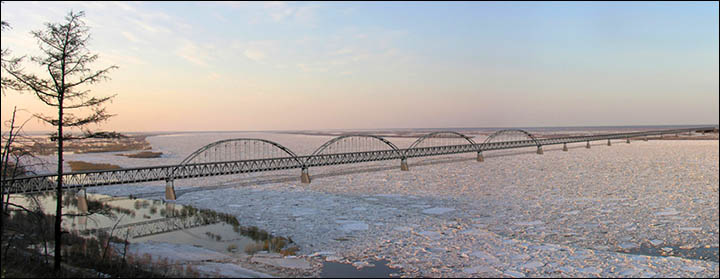
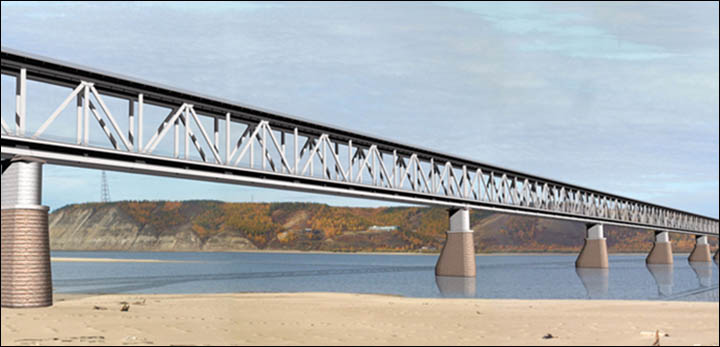
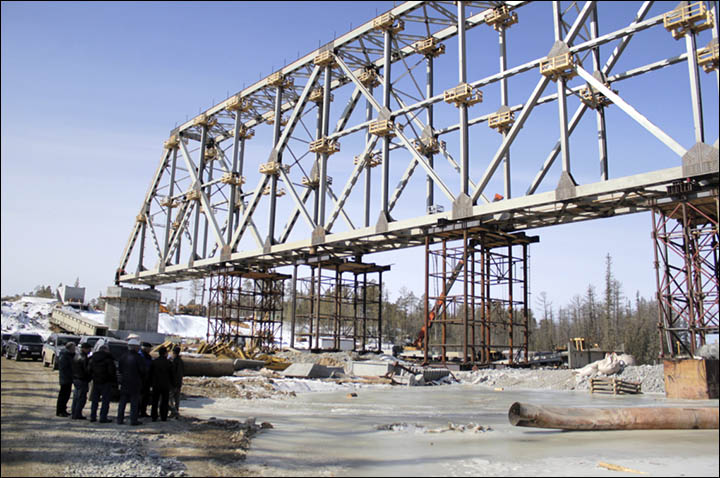
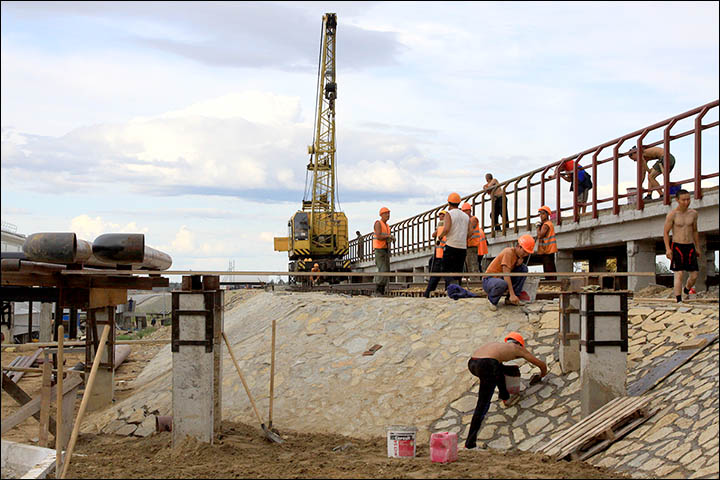
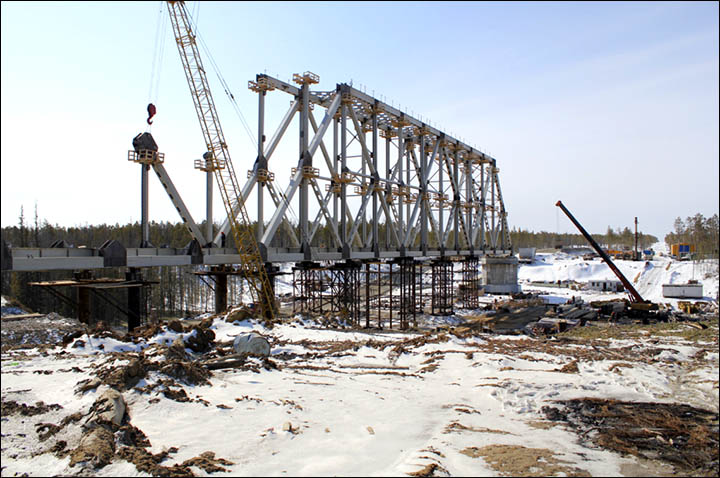
The new line presents a major new tourist attraction for rail explorers from around the world, and for Russians.
Called AYAM – the north-south Amur-Yakutian Mainline (BAM) – the line has links for travellers either coming from the east or west on the Trans Siberian and also the Baikal Amur Mainline. At its most southerly point, is the station of Bamovskaya station on the Trans-Siberian line, in the west of Amur region, some 32 km north-west of Skovorodino station.
From here the mainline goes north, joining the Baikal-Amur Mainline at Tynda station. It then proceeds and goes along the BAM for about 27 km, before heading northwards.
Currently passenger traffic operates from Tynda to the town of Tommot, located on the Aldan River, with population of more than 8000 people. Tommot is some 390 km (240 miles) southwest of Yakutsk and 70 km (43 miles) southwest of Aldan.
This part of the route has been in operation for passengers for a decade, and for freight since 1997, but the excitement is in the link though some of Russia’s remotest territory to the outskirts of Yakutsk, diamond capital of Russia.
Beyond Tommot station, the railway crosses the Aldan River on a 350 metre bridge, the longest on the line – except for the planned bridge across Lena on the 29.8 km (18.5 mile) stretch between Nizhny Bestyakh and Yakutsk.

continue reading »
New Chinese plan sees a rail link via Siberia from Beijing to the US and Canada…at bullet speed
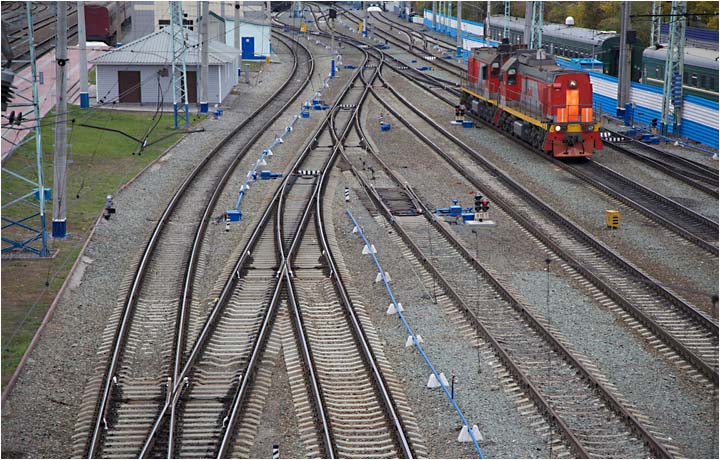
Russia has long had dreams, and even plans, of a rail link from Chukotka to Alaska across the Bering Strait. But a new and ambitious high speed plan from China, linking Beijing to North America, could also rekindle the romance of rail while also being a hard-headed business plan for moving cargo.
The train would speed at 350 kilometres an hour and include 200 km of undersea tunnel.
China would be linked to the east coast of the US in two days.
The Beijing Times newspaper revealed that the proposed line would begin in north-east China, run through eastern Siberia, pass in a tunnel under the Bering Strait between Russia and Alaska, before travelling through Canada and back into the the United States.
The proposal comes from the Chinese Academy of Engineering and is called ‘China to Russia plus the United States’. If the line is connected to the Trans-Siberian Railway, then it will allow for travellers to plan routes to and from Europe, and even via the tunnel under the English Channel, the UK.
The China-US concept is for a 13,000 kilometre line, longer than the Trans-Siberian.
State-run China Daily said the technology is ‘already in place’ and will be used to build a high-speed railway between the south-east province of Fujian and Taiwan. ‘The project will be funded and constructed by China’, it stated.
Other ambitious Chinese plans include other ultra-long distance lines which would link to this new proposal. All would require agreement with Russia and other countries. One would run through Europe to Moscow, where it would split into two lines. The northern branch would go through eastern Siberia, the other cut south via Kazakhstan to China.
A second starting in far-western China would run through Kazakhstan, Uzbekistan, Turkmenistan, Iran and Turkey to Germany.
The New Silk Road, mainly for cargo, is seen as an alternative to both sea passages and the Trans-Siberian Railway. The third would begin in the south-western city of Kunming and end in Singapore, with reports suggesting that the projects are at various stages of the planning process.
‘Right now we’re already in discussions. Russia has already been thinking about this for many years,’ said Wang Mengshu, an engineer cited by the Chinese media.
source »
Japanese and Korean companies show interest in fast-track development plans for Russian Far East

The jargon refers to Areas of the Advanced Development (AAD) but behind this bureaucratic patois maybe the device that finally kickstarts the economy in the Far East of Russia. The eastern edge of Siberia will lead the way for such areas – offering huge tax incentives – in an attempt to woo investors, says the Russian government.
Legislation teeing off the scheme is now rushing through the State Duma, or parliament.
Alexander Galushka, minister for development of the Russian Far East, predicted these new development areas will become a central mechanism for economic development of a vast region full of as yet untapped potential. His aim in mapping out the new plan has been to ensure global international competitiveness and appropriate investment conditions for the business in the Far East of Russia in comparison with Asia Pacific countries.
Significantly, he announced: ‘The heads of the major Japanese companies like Sumitomo, Kawasaki, Hitachi, Mitsubishi, Mitsuei personally expressed interest in the project of the Areas of Advanced Development in the Far East.
‘The same applies to heads of major South Korean companies like Samsung, Lotte, LG, Daewoo who also repeatedly confirmed interest in the project’.
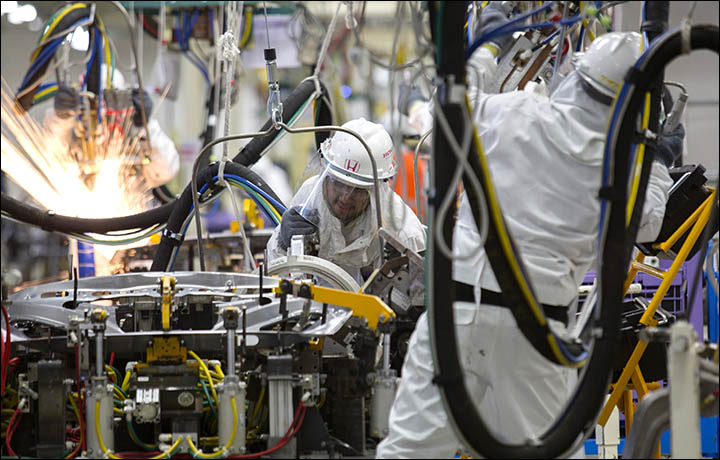
Two core ideas are behind the scheme – deregulation and tax reduction. Residents will qualify for profit tax benefits. For example, the federal tax rate will be 0%, while regional levies should be no more than 5% in the first ten years, later rising to 10%.
‘Moreover, it is proposed to introduce 5-year tax holidays regarding a mineral extraction tax and taxes on land and property, as well as insurance contribution benefits – the rate will total 7.6% concerning companies becoming residents during the first three years since establishment of advanced development areas,’ said Rossiiskaya Gazeta.
‘Other benefits will be related to rental rates and the link to engineering systems’.
‘Besides, they will include speeded-up VAT compensation, curtailed scheduled and non-scheduled inspections of residents (up to 15 and five days respectively), no limits regarding the number of foreign employees. The bill is due to be completely drafted in two weeks.’
Prime Minister Dmitry Medvedev, speaking at a government meeting, called for a focus on the establishment of industries that are not related to the production and export of raw materials.
‘The change we have been promoting in the Russian Far East requires different economic dynamics for the region,’ he said. ‘The Russian Far East, understandably, needs strategic investors; investors, for their part, need a normal business environment.
‘What exactly is a business environment? It primarily has to do with administration, a tax regime and business involvement. This being the case, we will still have to look to our neighbours, because this is a single region when it comes to investment’.

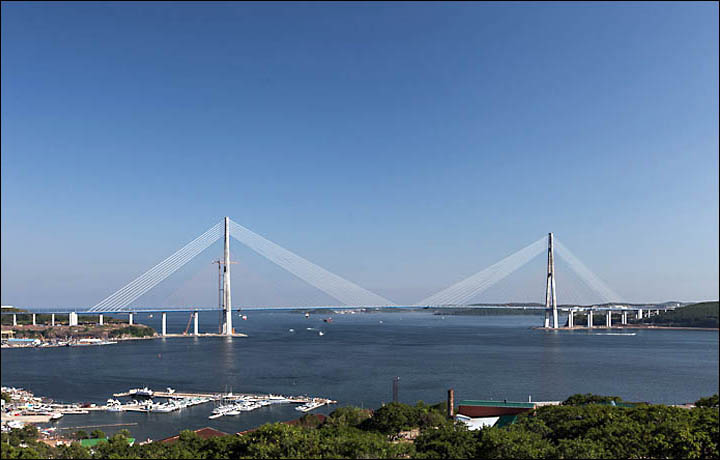
Pacific Rim countries that Russia wants to emulate ‘have climbed to a very high level in this regard and have done a very competent job creating an investment climate. We should at least try to approach these indicators. We should facilitate the establishment of export-oriented non-resource businesses that, on the other hand, are oriented to import substitution.’
He urged: ‘We should try to remove infrastructure restraints that abound in the region because of its remoteness from central Russia; and, of course, we should recruit skilled personnel and create new jobs’.
Declaring the Russian government’s willingness to listen, Medvedev said: ‘It is important that the interests of the investors themselves should serve as a major criterion for listing specific regions among the accelerated development territories, because we can create whatever we want, but that doesn’t mean that investors will go there.
‘We should select various projects for specific investors and potential users. We need to launch dialogue with those specific companies which already operate or which are ready to start working there. Of course, we have to inform investors on the market and demonstrate our advantages. And we should also try to create such advantages if they are still lacking.’
Deputy Director General of the International Centre for Regional Development Oleg Stolyarov, commenting on the desire to copy this model: ‘The tax cuts are not that important. The main thing is a strategy for the development of such areas, and there are no people who could select investors and to create conditions for them’.
source »
Please support us by downloading our Towards Healthcare Emancipation – Premium Edition, a fully illustrated eBook about how you can implement a low cost but extensive and decisively effective healthcare system in the comfort of your own home.
With this eBook you can easily defeat cancer, AIDS and all other parasitic diseases for good. Find out more about it here. The proceeds from this book will be used to fund our next project, Towards Energy Emancipation. The aim is to make the subject of free energy more understandable for the layman so that anybody could replicate and install his own power plant and be completely living off-grid.
If you haven’t done so, please like our FB page to encourage others to learn more about our work. Thank you very much for your valuable support.



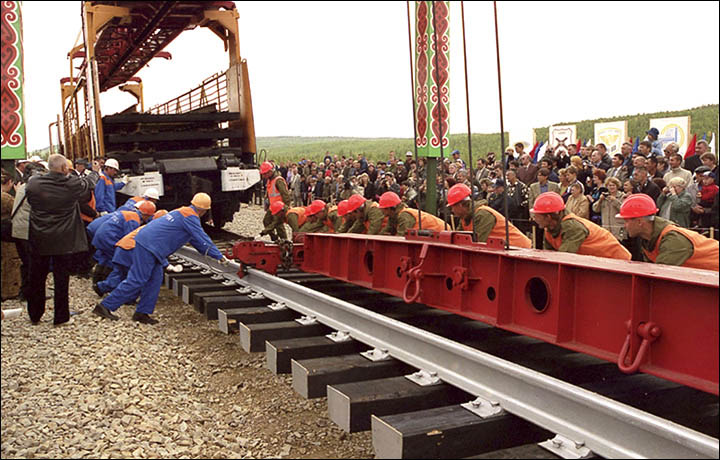


It is best for superpower nations to indulge in developments not on mass destruction through war.